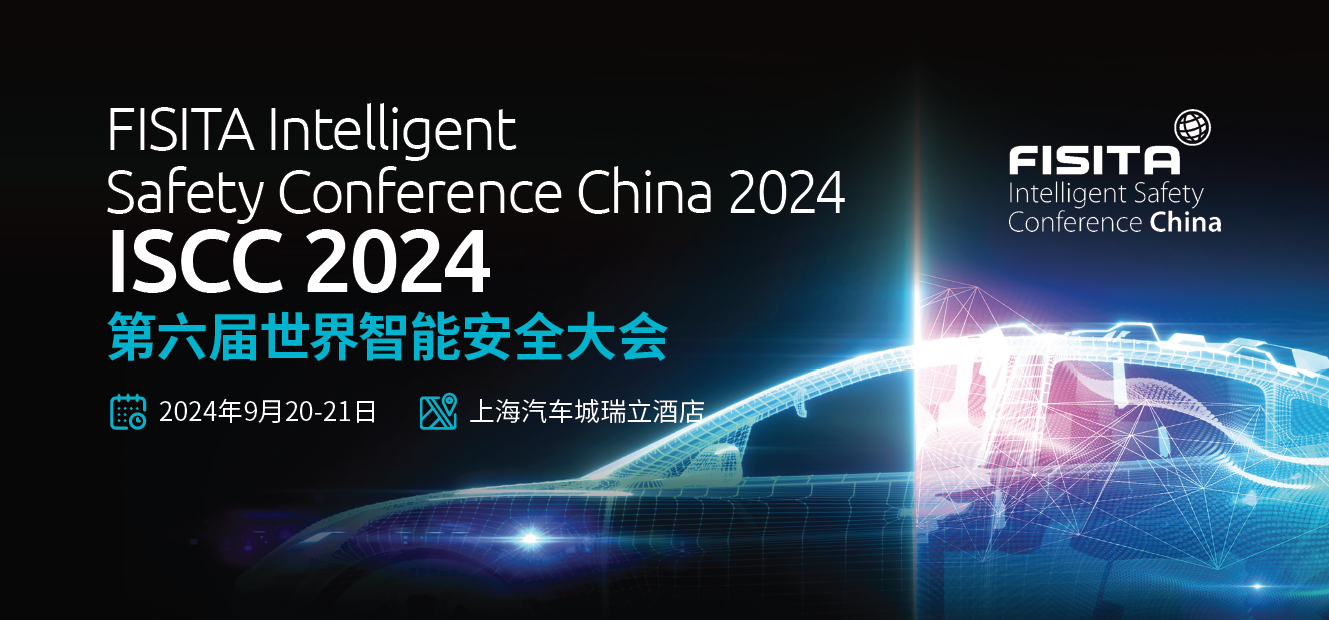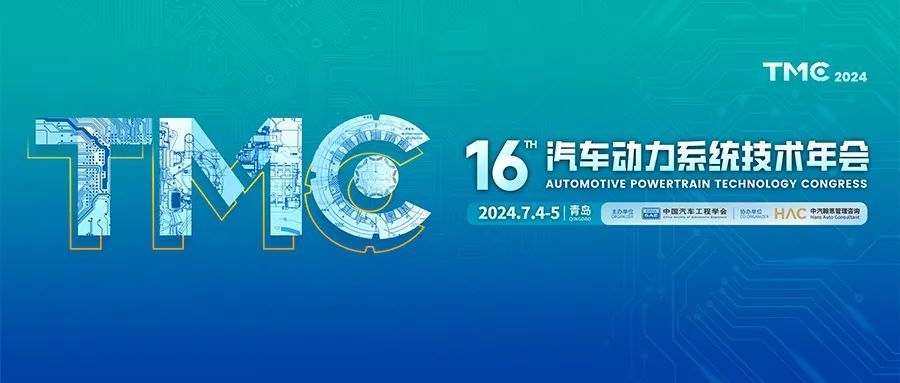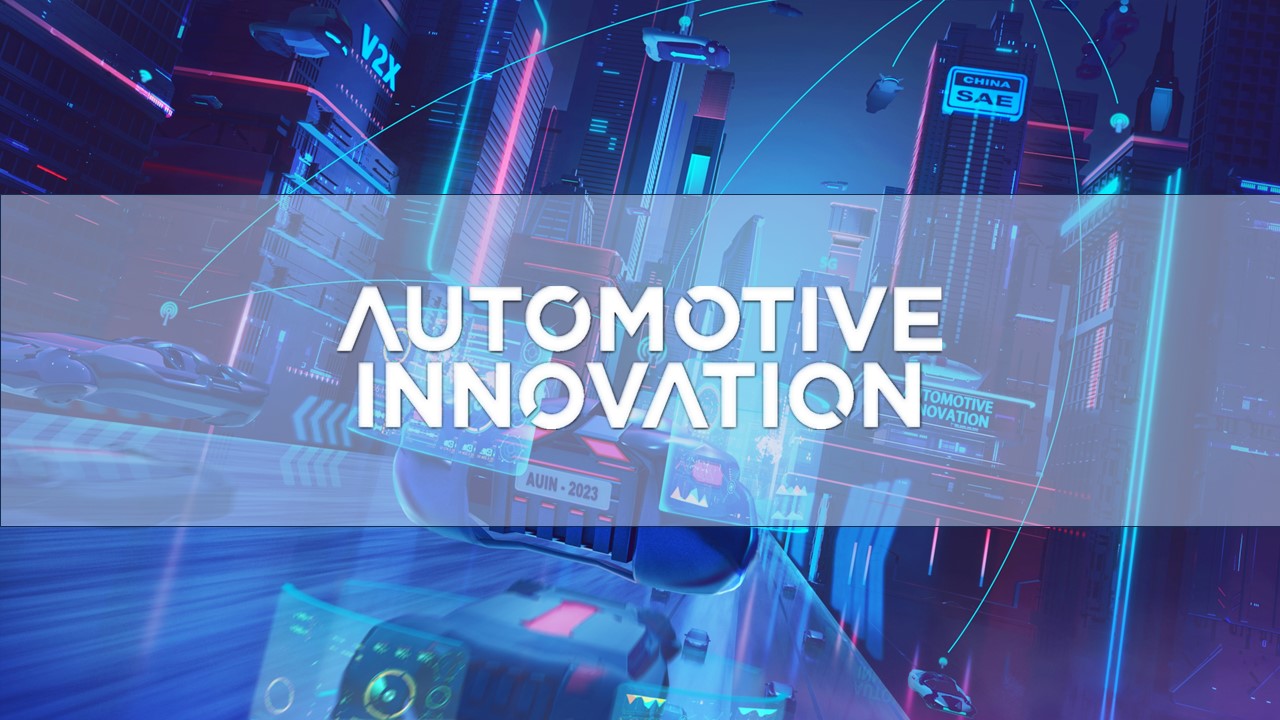

|
The journal Automotive Innovation is sponsored by China SAE, published through Springer Nature, distributed around the world, it reflects the top-level research and technological advance of automotive engineering. Automotive Innovation newsletter in June includes the following contents: 1. Article Recommendation——Three papers on Electric Vehicles 2. China SAE News: · ISCC 2024 Early Bird Ticket Registration is Launched |

   
|
Toward Carbon Neutral Road Transport: Development Strategies and New R&D Organizational Paradigms
Xu Hao, Hewu Wang, Yali Zheng, Yan Lin, Song Han, Ruiheng Zhong, Jialin Li |
||
| Transportation electrification is accelerating worldwide as part of the concerted effort to achieve carbon neutrality within the transportation sector. However, some challenges still need to be overcome. Government financial support in the new energy vehicle (NEV) markets, in regions and countries such as the European Union, the United States, China, and Japan, directly incentivizes research and development (R&D) and signals technology strategy emphasis of each country. To gain a comprehensive understanding of the distinct national approaches to realizing the shared goal of global carbon neutrality, this study has established an analytical framework. It aims to critically assess the policies and incentives that propel the industrial and technological routes for decarbonizing transportation, all under the overarching guidance of government-led R&D strategies within the NEV markets. Publicly available papers, reports, and roadmaps are analyzed. The findings of this investigation indicate that the future development of the NEV market is driven by carbon–neutral policies within the regions and countries covered in this study. Key areas of development focus include advanced batteries, more efficient motors, and clean hydrogen, but each country has a distinct strategy and organization. This strategic and organizational review can provide insights and suggestions that can facilitate tangible interventions in supporting the ongoing advancement of NEV technology. | |||
|
Keywords: New energy vehicle, Carbon neutrality, R&D research strategy, Innovation organization paradigm Hao, X., Wang, H., Zheng, Y. et al.: Toward Carbon Neutral Road Transport: Development Strategies and New R&D Organizational Paradigms. Automot. Innov. 7, 209–224 (2024). |
|||
| Full Paper Reading>> | |||
   
|
Analysis and Optimization of Commercial Scale PEMFCs With Different Flow Channels Prepared by Ultrafast Laser Fabrication Technique Guanlei Zhao, Huize Liu, Hanqiao Sun, Zunyan Hu, Jianqiu Li, Liangfei Xu, Minggao Ouyang |
||
| The objective of this study is to investigate the potential reduction of polarization in proton exchange membrane fuel cells (PEMFCs) through the design optimization of flow channel. The impact of structural parameters and surface properties of the bipolar plate flow channels on the PEMFC performance is thoroughly examined on a commercial scale PEMFC with an active area of 203.49 cm2. The fabrication of bipolar plate flow channels with different structural and wetting properties is achieved using a novel ultrafast laser technique and a conventional milling method. Single cell stack is assembled and subjected to polarization curve tests. The findings indicate that decreasing the width of the flow channels generally improves the performance of commercial-scale PEMFCs. The minimum allowable channel width is dependent on the length of the flow channels. Interestingly, flow channels with higher hydrophilicity and surface adhesion do not necessarily lead to poorer water removal capability, which may be attributed to the formation of a thin water film on superhydrophilic channel surfaces. This research provides valuable insights into the design of optimal flow fields for commercial-scale PEMFCs. | |||
|
Keywords: PEMFC, Concentration polarization, Flow field, Ultrafast laser, Surface wettability
Zhao, G., Liu, H., Sun, H. et al.: Analysis and Optimization of Commercial Scale PEMFCs With Different Flow Channels Prepared by Ultrafast Laser Fabrication Technique. Automot. Innov. 7, 225–235 (2024). |
|||
| Full Paper Reading>> | |||
   
|
Torque Vectoring and Multi-Mode Driving of Electric Vehicles with a Novel Dual-Motor Coupling Electric Drive System
Junnian Wang, Zhenhao Zhang, Dachang Guo, Jiantu Ni, Changyang Guan, Tianhui Zheng |
||
| Highly integrated and efficient electric drive technology for improving the comprehensive performance of electric vehicles stands as a prominent research focus. This paper proposes a novel dual-motor coupling electric drive axle incorporating torque vectoring (TV) technology, aiming to enhance driving maneuverability and further improve vehicle efficiency. Firstly, the configuration of the dual-motor coupling drive-axle is analyzed, introducing its four operational modes: main drive motor independent drive mode, TV motor independent drive mode, dual-motor torque coupling drive mode, and torque vectoring drive mode. Subsequently, to unlock the energy-saving potential of the dual-motor coupling drive system, optimization of the drive-mode division is conducted. This optimization selects the work mode with minimal energy consumption under the specified speed and torque requirements. The switching logic thresholds for optimal work mode boundaries and their buffer zones, designed to mitigate frequent switchover, are established in the equivalent external characteristic map of the dual motors. Finally, the co-simulation validates the torque vectoring function and driving economy. Results indicate that positive or negative torque vectoring can be strategically employed to enhance driving maneuverability or stability, respectively. The optimized multi-mode driving of the proposed dual-motor coupling electric drive-axle demonstrates a reduction in energy consumption by 7.28%, 7.35%, and 8.54% under NEDC, FTP-75, and CLTC work conditions, respectively, in comparison with a single-motor drive-axle with equal total power. | |||
|
Keywords: Electric vehicle, Dual-motor coupling, Torque vectoring, Work mode division, Energy-saving potential Wang, J., Zhang, Z., Guo, D. et al. Torque Vectoring and Multi-Mode Driving of Electric Vehicles with a Novel Dual-Motor Coupling Electric Drive System. Automot. Innov. (2024). |
|||
| Full Paper Reading>> | |||

| ISCC 2024 Early Bird Ticket Registration is Launched | |||
 The 6th FISITA Intelligent Safety Conference China (ISCC 2024)will take place on September 20 – 21 in Shanghai, China. The FISITA Intelligent Safety Conference China will deliver a high-quality, national and international speaker line-up, which will consider and discuss the important topics of the Strategy, Technology Roadmap, and Key Technologies for Autonomous Driving Safety, making this one of the important, must-attend events of 2024.The topics covered will be:
|
|||
| Participant Guide for TMC2024 was Released | |||
 Participant Guide for TMC2024 was Released The 16th Automotive Powertrain Technology Congress (TMC2024) will be held in Qingdao on July 4th-5th. The conference and exhibition will cover innovative technologies and solutions in pure electric drive, hybrid power, drive motors, power semiconductors, and commercial vehicle power systems. Meanwhile, closed-door meetings will also be organized to delve into the innovative directions and development trends of important technical routes. The participant guide for TMC2024 was released. For more detailed information please click here . |
|||
| Latest Impact Factor Released: AUIN Ranks Q1 in Three Categories | |||
 In the 2024 Journal Citation Reports (JCR) released by Clarivate, Automotive Innovation has been ranked Q1 in three categories: "Mechanical Engineering", "Electrical Engineering & Electronics", and "Transportation Science & Technology". Automotive Innovation's latest impact factor stands at 4.8, rising to the Q1 in the field of "Transportation Science & Technology" and maintaining its position in Q1 in the fields of "Mechanical Engineering" and "Electrical Engineering & Electronics". For more detailed information please click here . |
|||

|
Automotive Innovation Sponsored by China SAE and published globally via Springer Nature, Automotive Innovation aims to be a world-class journal that provides abundant sources of innovative findings for automotive engineers and scientists. The journal is published quarterly, ensuring high-quality papers satisfying international standards. With the editorial board consisting of world-renowned experts, it has attracted readers from 72 countries and regions. The highest download of a single article wins more than 32,000. The journal is indexed in Ei Compendex, ESCI, and Scopus (IF2023=4.8; CiteScore2023=8.5). The journal provides a forum for the research of principles, methodologies, designs, theoretical background, and cutting-edge technologies in connection with the development of vehicle and mobility. The main topics cover: energy-saving, electrification, intelligent and connected, safety, and emerging vehicle technologies. Editors-in-Chief Jun Li, Academician of CAE, President of China SAE, Professor of Tsinghua University Frank Zhao, Honorary Lifetime President of FISITA, Director of Tsinghua Automotive Strategy Research Institute, Professor of Tsinghua University Executive Associate Editor-in-Chief Prof. Xinjie Zhang, Professor of Jilin University |
||
|
Paper submission and browse www.ChinaSAEJournal.com.cn www.springer.com/42154 Contacts: Ms. Dong Li Tel: +86-10 5092-3792 Email: lidong@sae-china.org 
|

|
|
|
Sponsored by |
Published by
|
|